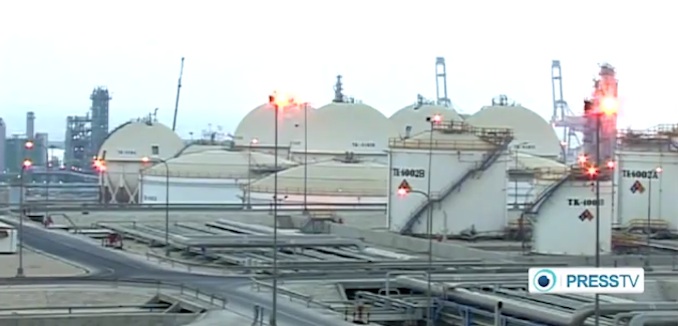New figures published late Thursday indicate that Iran will bust through caps on crude exports set by the interim Joint Plan of Action (JPA) for the seventh month in a row – with the exported amounts in May, ostensibly limited to 1 million barrels per day (bpd), actually increasing over April’s output – as the State Department was pressed for the second time in three days on how the administration is addressing the Iranian violations:
Iran’s crude oil exports increased in May after a decline in April, according to sources who track tanker movements, moving above the level allowed by November’s interim deal on curbing Tehran’s nuclear program.
The increase, which appears to be led by higher sales to China in particular, could revive concerns in Washington that a softening of sanctions has given Tehran’s economy a bigger boost than planned.
Iran’s exports have averaged 1.38 million barrels per day (bpd) in May, one of the sources said. That represents an increase from 1.1 million bpd in April, as estimated by the Paris-based International Energy Agency.
Iran has exceeded the allowed amounts every single month since the JPA was announced in November, but administration officials have categorically insisted that the Islamic republic’s output would soon crash so precipitously that by the end of the JPA’s six-month enforcement period the total exports would average out to 1 million bpd’s.
Last week Timothy Wilson, a visiting fellow at the Foundation for Defense of Democracies (FDD), assessed that such a scenario was now mathematically impossible, promoting journalists to query State Department Spokesperson Jen Psaki on the issue on Tuesday. Psaki promised to “talk to [State’s] team and see what their view is,” and responded Thursday to questions on Iranian oil exports:
QUESTION: On Iran, did you give – I believe you did. Do you have the answer to the oil question I asked the other day? Or maybe it’s not in your book in front of you.
MS. PSAKI: Well, we are aware of press reports that Iran’s crude oil exports have at times exceeded the target, but there’s a range of data that’s looked at. We would disagree with the findings that you referenced that suggested it’s mathematically impossible. We disagree with that. We’ll continue to track, as we have been, for the upcoming months.
QUESTION: Mathematically impossible for the average to go below what it —
MS. PSAKI: Mm-hmm, yes.
QUESTION: — what it was set out in the joint agreement? Is that correct?
MS. PSAKI: Yeah. Our view is it’s way too early to make that conclusion.
Meanwhile Steve H. Hanke, a professor of Applied Economics at Johns Hopkins University in Baltimore, revealed new numbers showing that Iranian President Hassan Rouhani has managed to pull the country “out of its [economic] death spiral” even as the economic conditions for average Iranians remained stagnant.
At stake are increasingly pitched worries that the P5+1 global powers, which are seeking to secure a comprehensive deal over Iran’s nuclear program in the coming weeks, lack sufficient leverage to coerce Tehran into putting its atomic program verifiably beyond use for weaponization.
[Photo: PressTV News Videos / YouTube]




